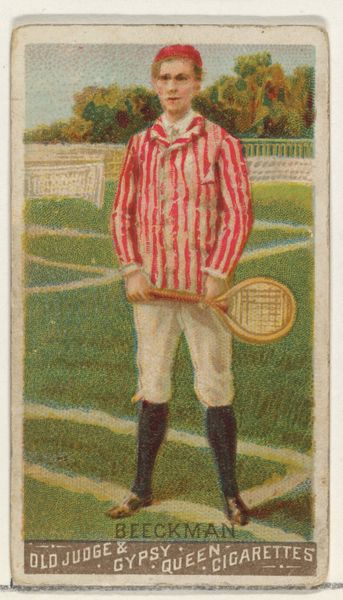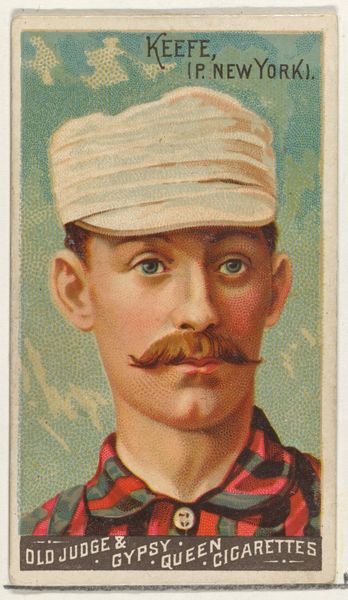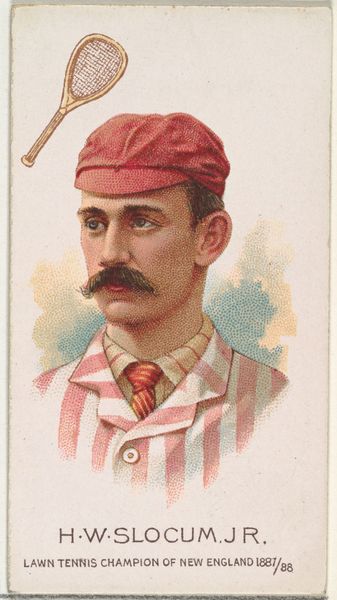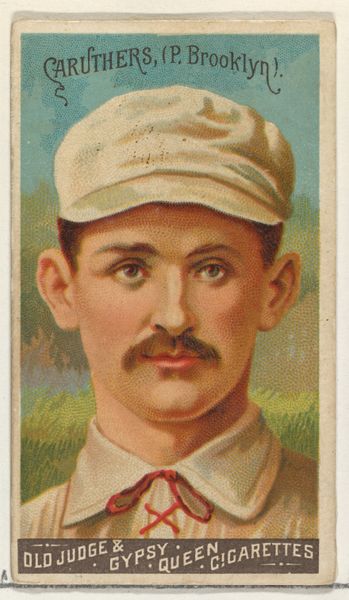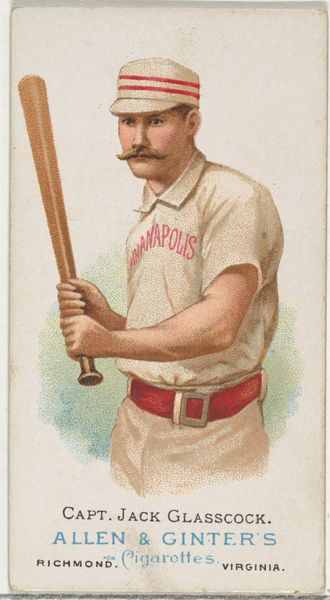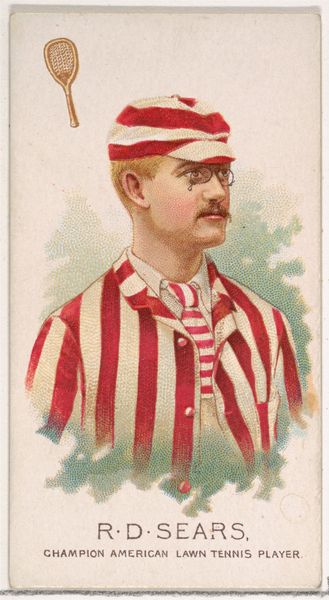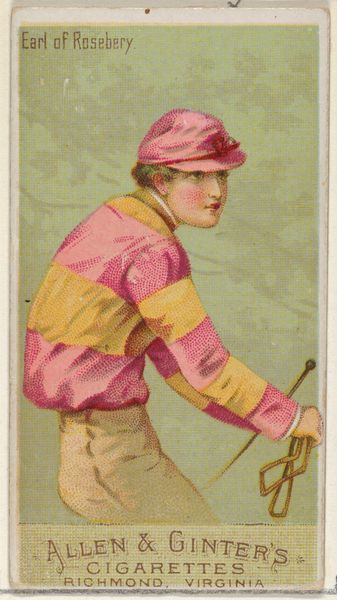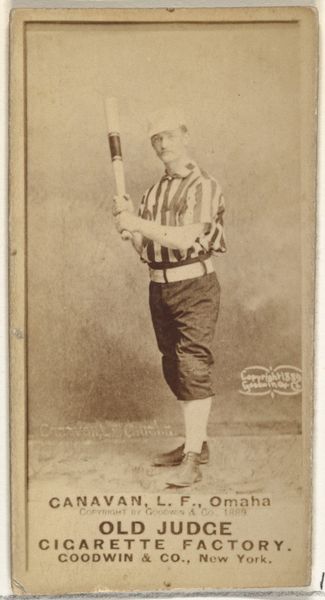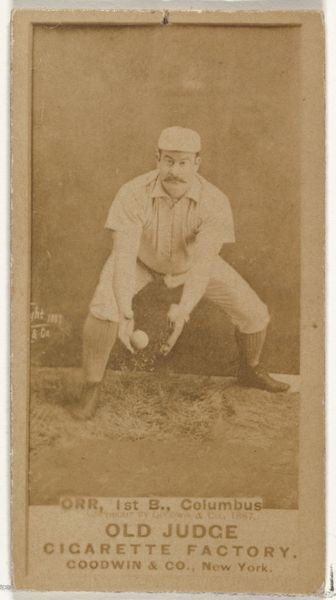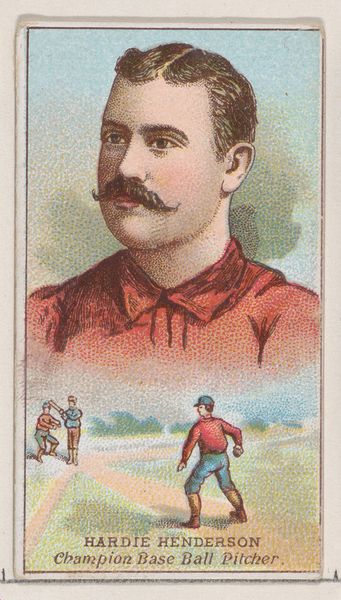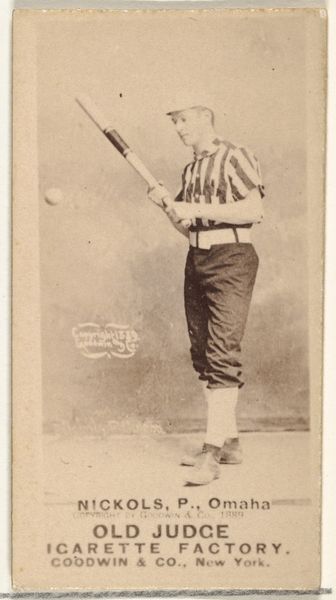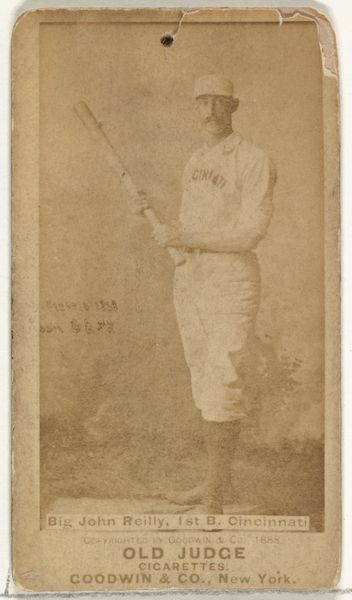
Dwight, Lawn Tennis, from the Goodwin Champion series for Old Judge and Gypsy Queen Cigarettes 1888
drawing, print, pencil
portrait
drawing
caricature
caricature
pencil
Dimensions: sheet: 2 5/8 x 1 1/2 in. (6.6 x 3.8 cm)
Copyright: Public Domain
Curator: At the Metropolitan Museum of Art, we have "Dwight, Lawn Tennis, from the Goodwin Champion series for Old Judge and Gypsy Queen Cigarettes," dating back to 1888. Editor: There's something quite charming about the colors—they're faded and delicate, giving a nostalgic, almost sepia-toned quality to the print, despite the pink ribbon. It gives off the aroma of the fleeting glory in games, sports, youth. Curator: That pink ribbon actually provides crucial insight. It announces "Lawn Tennis", connecting the image with leisure and class aspiration during the late 19th century. The man depicted signifies more than just himself; he represents a type, an ideal. The image carries the semiotic weight of cultural endorsement. Editor: It is quite diminutive! The lithographic print hints at mass production. We should recall the work it required for Goodwin & Company to make the original pencil drawing, preparing it for reproduction and inserting the image in millions of cigarette packs. The value isn't necessarily the “art” itself, but the labor and means to disseminate the image widely. Curator: It transcends mere product placement. While made for commercial ends, the rendering and depiction hint at deeper associations: the umbrella next to him points toward themes of social status and the ritual of recreation as more than just sport but as signifiers. Note his slightly puffed up chest with pride and his formal attire in the relaxed context of the "lawn tennis" environment! Editor: I still find it hard to look beyond its origin. We shouldn’t idealize these objects from the Goodwin series of portraits. They are remnants of industries pushing consumption and constructed notions of sport at that time. Their value to me resides less in idealized athletic aspirations and more in their function in larger production and consumption of tobacco culture. Curator: Your material assessment does provide an essential layer to appreciating this image, offering us a very palpable tether to cultural practice embedded in everyday rituals. Editor: Indeed, viewing it both ways helps grasp not just the what, but the how and the why, within history’s larger context.
Comments
No comments
Be the first to comment and join the conversation on the ultimate creative platform.
